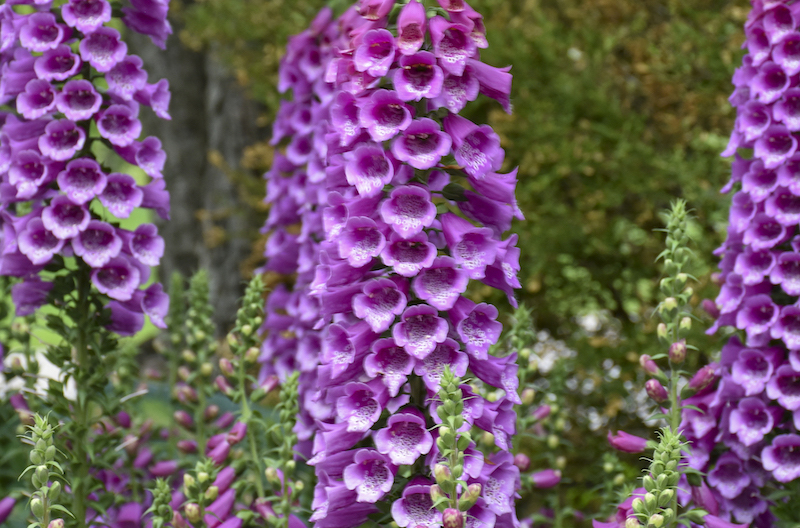Foxglove, Digitalis purpurea, is a biennial that requires little in the way of supplemental feeding. In the first year, Foxglove produces a strong root system and a basal set of leaves. Soil moderately rich in nutrients will be enough to support continuous growth at this stage. After overwintering, the second year is when Foxglove sends up its fantastic flower spikes. A light feeding early in the second season will support tall flower stalks and attractive foliage.

How to Fertilize Foxglove
Foxgloves thrive in slightly acidic soil that has a moderate amount of nutrition. A pH level of 6.0-7.0 is ideal. Even though some varieties of Foxglove are considered an invasive weed in parts of the United States, the root system is relatively shallow and easy to remove while plants are in their first year, and not likely to cause damage to building foundations. Using a granular, slow-release fertilizer ensures even feeding throughout the growing and blooming stages. Mulching the root zone with organic compost is also a great way to deliver a steady amount of nutrients as the compost breaks down over the season.
Best Time To Fertilize Foxglove
Fertilizing Foxglove in the early spring will support heavy flowering and strong growth. The perennial types of Foxglove, Digitalis grandiflora, D. lanata, etc., can be fed every spring. The biennial D. purpurea cultivars are best fertilized only during the second growing season.
Best Fertilizer For Foxglove
Choose an extended-release formula with an NPK ratio around 1-4-2. Higher levels of phosphorous encourage blooming and good root development, which is important for biennials and perennials. Espoma Flower-tone is a good choice to use on most perennial and biennial plants.
Foxglove Fertilizing Tips
- Enrich the soil by mulching annually with organic compost
- Use a slow-release granular fertilizer once in the spring to support heavy blooming
- Some foxglove varieties are short-lived perennials that grow and bloom for 3-5 years before dying off, and should be fed yearly
Warnings
-Always wear protective gloves and a face mask when handling chemical fertilizers.
-Closely follow all directions and storage guidelines that are on the fertilizer label.
 |
Author Robbin Small - Published 6-28-2023 |
